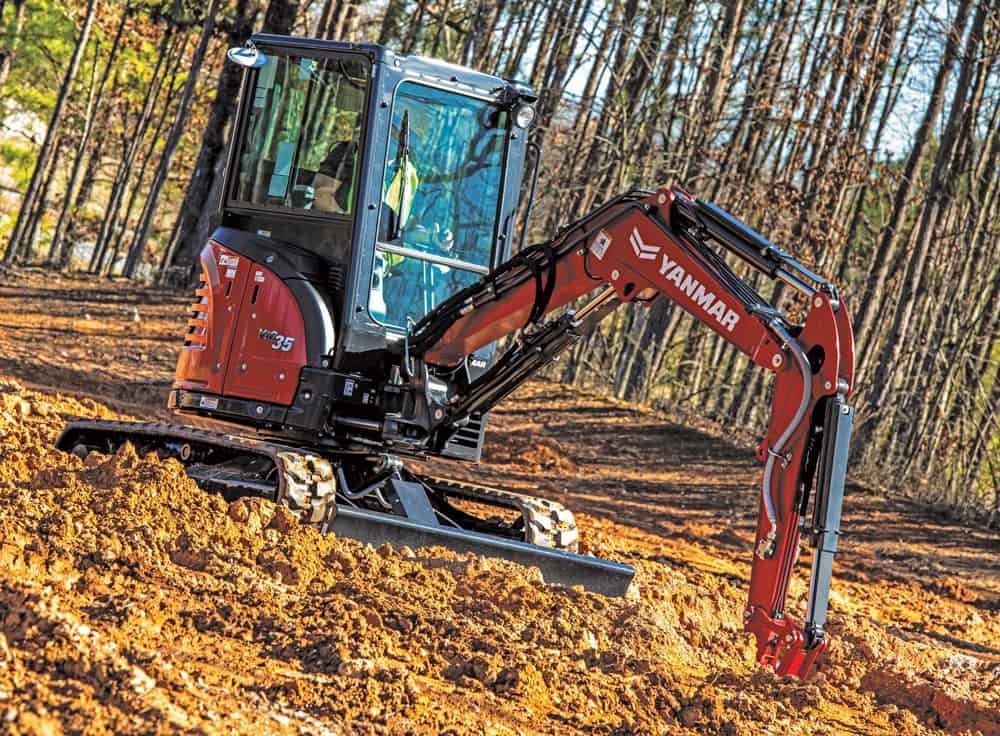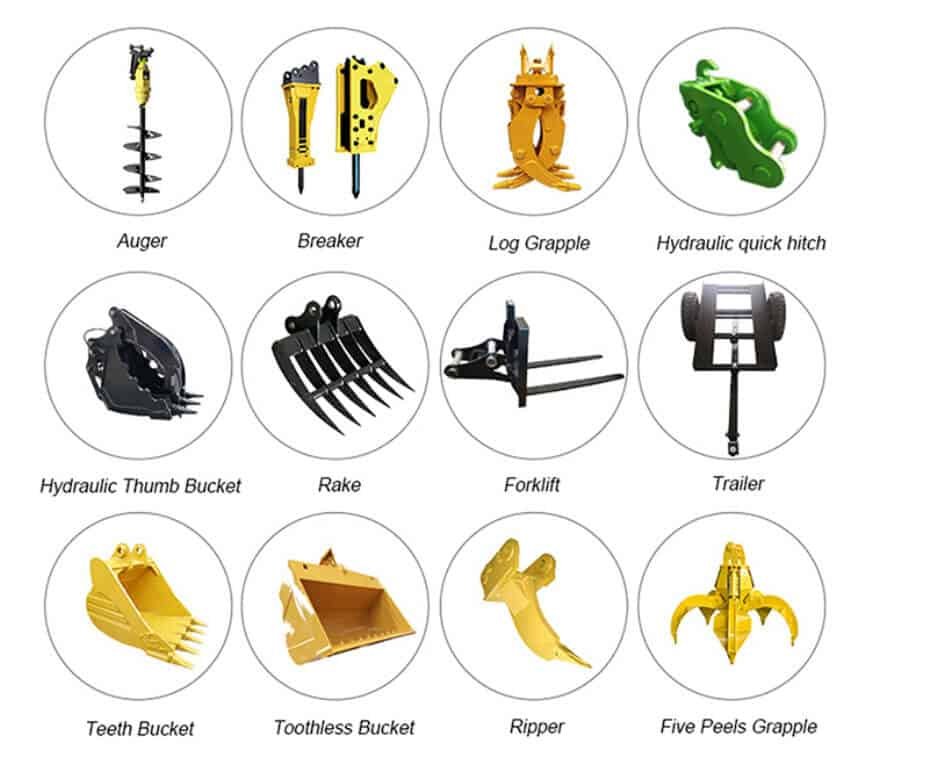Introduction
Digger is an important tool for contractors and homeowners alike, and if you’re looking to buy one, it’s important to know how to operate it. This guide will teach you everything you need to know about mini excavators, from how they work to what safety precautions you should take when operating one.
If you’re looking to buy or operate a micro digger, this guide will teach you everything you need to know.
How to Operate A Micro Digger
Operating a mini excavator can be a scary task for the uninitiated, but with a little practice, you’ll be able to get the job done. Here are a few tips to get you started:
- Make sure you have the right tools for the job. Mini diggers require different tools than standard excavators, so make sure you have all the necessary equipment before starting.
- Plan your route carefully. While mini excavators are very versatile machines, they can still be difficult to control if you don’t plan your route carefully. Stay aware of obstacles and avoid hitting them if possible.
- Use caution when operating the machine. Micro excavators are powerful machines, and even small accidents can quickly become dangerous. Be careful not to injure yourself or anyone else while working with a mini excavator.
- Keep a clear head. Mini diggers are powerful machines, and if you’re not careful they can easily damage your equipment or injure you. Stay focused and keep your emotions in check when operating a small excavator.
- Always wear proper safety gear. Wear eye protection, a dust mask, and sturdy gloves to protect your hands from debris and raw materials.
- Respect the machine’s limits. Don’t try to exceed the mini excavator’s weight or power ratings. Inexperienced operators can easily damage the machine or themselves.
- Keep your excavation area clean. Sweep away debris and stones before beginning your excavation, and make sure the area is free of any hazardous materials before you start work.
- Use caution when moving machinery. Be careful not to injure yourself or bystanders as you move the micro digger around your excavation site.
- By following these simple safety tips, you’ll be well on your way to operating a micro digger safely and efficiently. If you ever find yourself in a situation where you can’t operate a micro digger correctly, don’t hesitate to contact your local equipment rental company for help. They will be able to provide you with the training and tools you need to get the job done right. For more information, you can take this video for reference.
Operational Tips for Mini Excavators
Operating a micro digger can be a lot of work, but with a little bit of prep and practice, you’ll be able to get the job done quickly and efficiently. Here are some tips to help you get started:
1. Make sure your equipment is properly maintained. Keep your mini digger running smoothly by keeping the engine well-oiled, replacing worn parts as needed, and checking for and fixing any mechanical problems.
2. Know your machine’s controls. Use the right gear to match the task at hand, and keep an eye on your speed and depth settings so you don’t damage valuable artifacts or become stuck in difficult soil conditions.
3. Work safely at all times. Stay alert for potential hazards while operating your mini excavator, and always use common sense when working in tight spaces or near power lines. By following these tips, you’ll be able to get the most out of your mini excavator in no time!

What Is a Micro Excavator Used For?
A mini excavator is a small, powerful machine that is used for removing soil and other materials. Mini excavators are versatile tools that can be used for many different tasks.
Micro diggers are great for projects that involve small amounts of soil removal. They are also perfect for use on land that is not accessible by large machines. Mini excavators are also great for projects that require quick turnaround times.
One of the most common uses for mini excavators is in construction. Mini excavators are used to removing dirt, stones, and other materials from sites before construction can begin. They are also used to remove debris from construction sites. Small excavators are ideal for smaller projects that do not require the full power of a larger machine. They are also great for projects that have tight deadlines.

How to Move the Load With a Micro Digger
It can be difficult to move the load with a mini excavator if the operator does not know how to operate it. Here are some tips for moving the load:
1. When starting the mini excavator, make sure that the engine is running smoothly. If there is any noise or problems, it will prevent the machine from working effectively.
2. Always use caution when operating the micro digger. If you are not familiar with its workings, do not try to do too much at once. Start with small tasks and gradually increase your workload as you become more comfortable with the machine.
3. Use a secure grip when moving the load. Do not use your hands and arms as levers; instead, use them to hold onto objects that are close to the machine. This will help reduce the risk of injury in case of accidental movement.
4. Always wear protective gear when working with the mini digger. This includes safety glasses, a face shield, and a sturdy pair of gloves.
5. Be aware of potential obstacles that may be in the way of your progress. If there is something that you cannot move with the micro excavator, consider removing it before starting the machine. This will help make moving the load much easier.

Mini Excavator Parts
Operating a mini excavator can be a daunting task, but with the right tools and knowledge, it can be easy. In this blog post, we will discuss the different parts of a mini excavator and how to operate them.
First, it is important to understand that not all micro excavators are created equal. The engine size, horsepower, and operating weight all play a role in how a mini excavator behaves. Accordingly, it is important to research which model is best for your specific needs before making a purchase.
Next, it is important to know how to operate the controls on your micro digger. There are several levers and buttons located on the front of the machine that controls the speed and direction of the digging. It is also important to know how to shift gears in order to match the ground surface being dug. Finally, it is necessary to know how to inspect the mini excavator for damage before each use. Mini excavators are powerful machines and can easily damage surrounding soil if not used carefully. By following these simple tips, anyone can operate a micro digger with ease!

Useful accessories for mini excavators
When operating a mini excavator, it’s important to have the right accessories on hand. Here are a few essentials you’ll want to keep in mind:
A micro digger bucket.
A mini excavator bucket is essential for carrying dirt and rock away from the site. Choose one that is sturdy and has plenty of capacity so you can complete your excavation quickly and efficiently.
A micro digger blade.
A mini excavator blade is essential for cutting through the soil, rocks, and other materials. It should be strong enough to handle the rigors of excavation work, but also lightweight so you can move it around easily.

A mini digger winch.
A mini excavator winch is invaluable for getting the excavator into and out of tight spaces. It should be durable and have a wide range of pull strength so you can secure the machine in place when working on difficult projects.
A mini excavator operator’s manual.
An operator’s manual is essential for understanding how to operate a micro digger properly. This document will provide instructions on how to set up the machine, operate it safely, and troubleshoot.
A micro digger battery charger.
A mini excavator battery charger is essential for keeping your excavator’s battery charged. This essential piece of equipment can save you time and hassle when you need to get your excavator working again quickly.
A micro digger chipper.
A mini excavator chipper is a valuable tool for removing large chunks of rock and earth from the excavation site. It can quickly reduce the size of the job, making it easier to manage and complete.
A micro digger shovel.
A mini excavator shovel is essential for carrying dirt and rocks away from the excavation site. Choose one that is sturdy and has a comfortable grip so you can work for long periods of time without fatigue.
A micro digger lighting system.
A mini excavator lighting system is essential for seeing what you’re doing while excavation work is underway. Choose one that has a bright light and adjustable intensity so you can work in any condition.
Safety Tips Before Operating a Micro Digger
Operating a micro digger can be a fun and rewarding experience, but it’s important to take precautions to ensure a safe and successful operation. Follow these safety tips to stay safe while operating your mini excavator:
- Always wear safety gear, including a helmet, eye protection, and gloves.
- Use caution when entering steep or tight areas.
- Use the correct size of equipment for the job at hand.
- Avoid unnecessary idling and keep the machine clean and well-maintained.
- Keep children away from the machine while it’s in operation.
- Use caution when operating the machine near power lines or other equipment that could be damaged by the excavator.
- Always keep a close eye on the excavation operation and make sure everything is going as planned.
- Report any safety concerns to your supervisor immediately.

Troubleshooting Mini Excavator Issues
If you’re having trouble operating your mini excavator, here are some tips to help you troubleshoot the issue.
- Check the oil level. Make sure the oil level is correct and that the engine is properly lubricated.
- Clean the area around the excavator wheel. This will help reduce friction and increase the accuracy of your movements.
- Clear any debris or objects in front of the excavator wheel. This will help improve traction and avoid obstacles during excavation work.
- Check for loose screws or bolts on the excavator chassis or engine assembly. Tighten these as needed to ensure optimal performance.
- Check for worn or damaged parts. Replace any parts that are damaged or worn, and ensure that they are properly installed.
- Check the ground clearance. Make sure that the excavator has enough clearance to move around obstacles during excavation work.
- Check for proper alignment of the excavator blades and the ground. Align the excavator blades so that they are perpendicular to the ground.
- Check for proper battery placement. Make sure that the batteries are in the correct location and properly connected to the excavator.
- Test the excavator’s mobility by moving it around the area where it will be used. Make sure that it moves smoothly and without difficulty.
- Check the excavator’s lights and sensors. Make sure that the lights and sensors are working properly, and that the alarm is triggered when necessary.
- Check for proper ventilation and airflow. Make sure that the excavator is equipped with proper ventilation and airflow systems to avoid overheating.

Conclusion
In conclusion, micro diggers are great machines to have in your back pocket for small jobs around the house or yard. They’re easy to operate and can handle a variety of tasks. Just be sure you understand the basics of how to operate a micro digger before you start working, and you’ll be fine. With a little practice, operating a mini excavator shouldn’t be too difficult. If you find yourself struggling, don’t hesitate to ask for help from your local equipment company or the micro digger supplier. They will be able to provide you with the training and tools you need to get the job done safely and efficiently.
We HIOSEN, as one of the leading micro digger manufacturers, will always provide the best solutions for your work. If you need such a small digger machine, don’t hesitate to contact us now!

